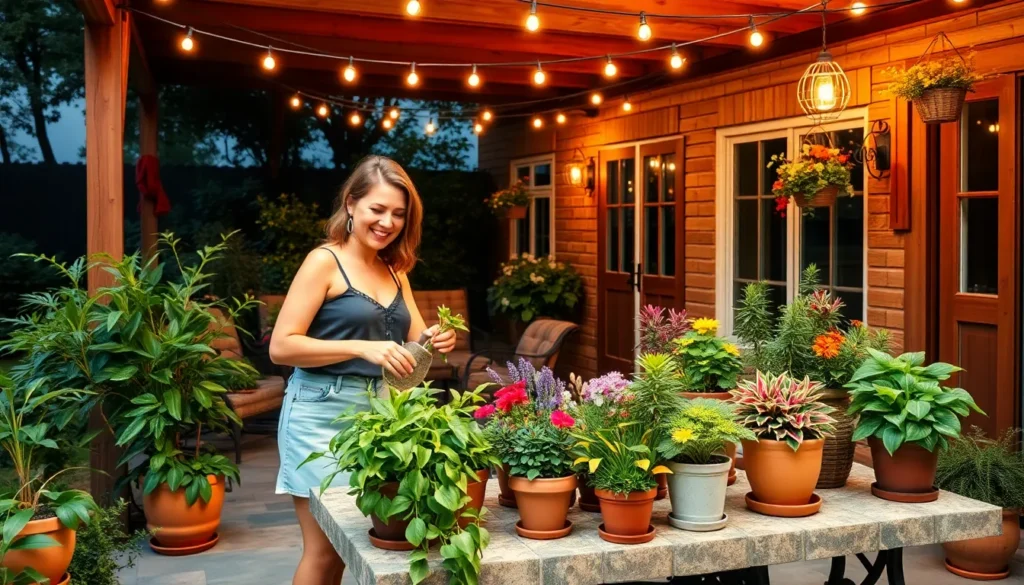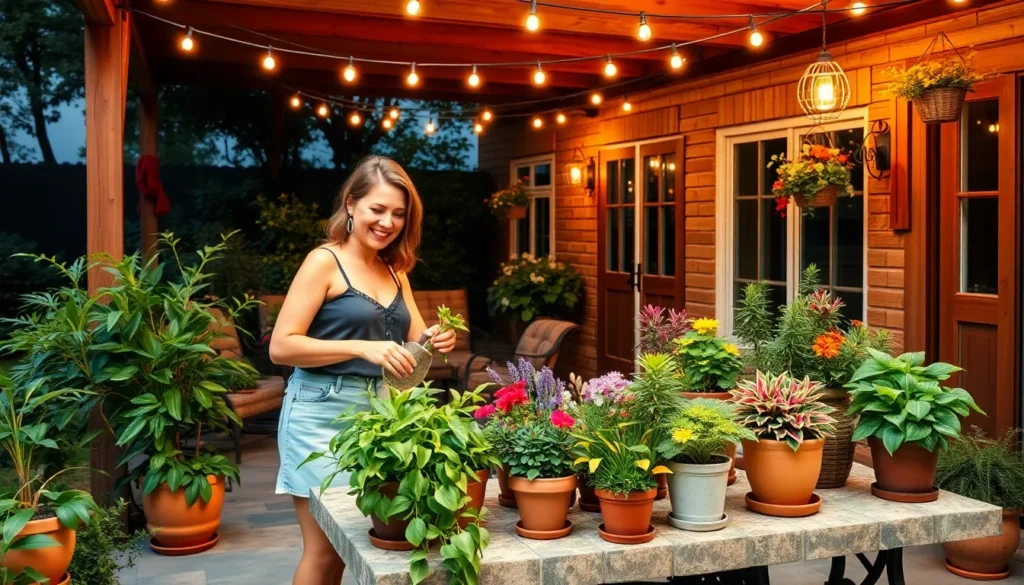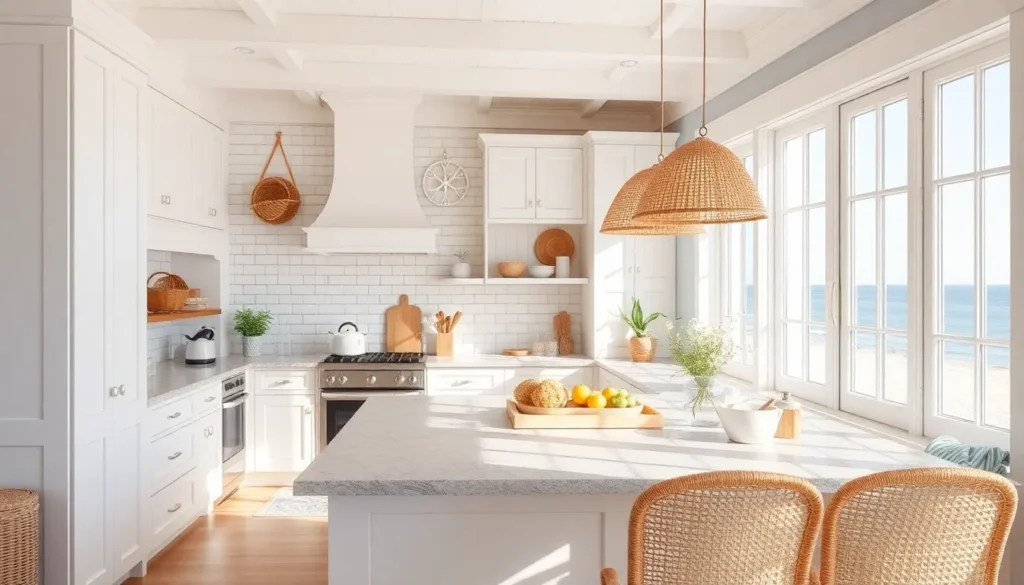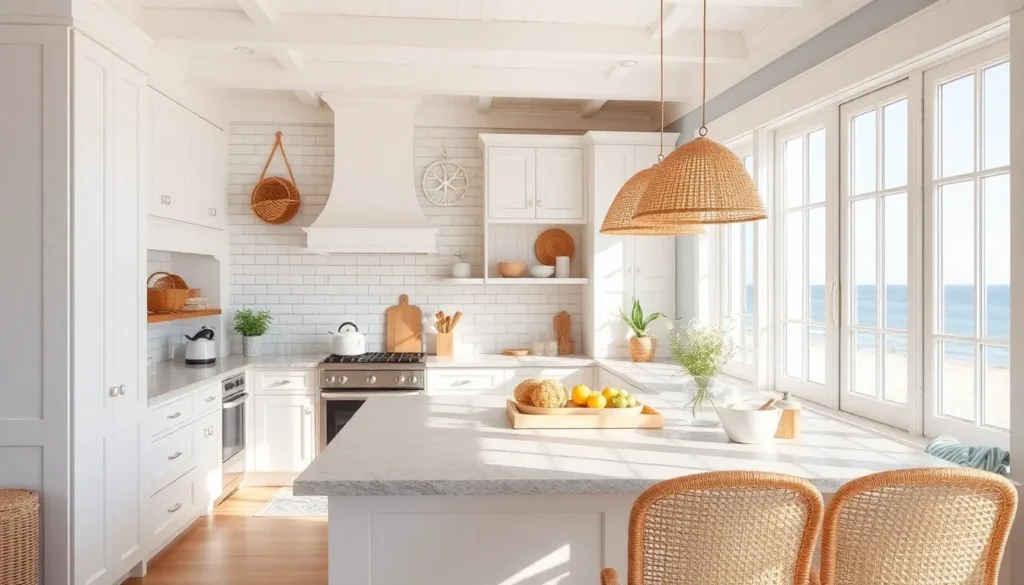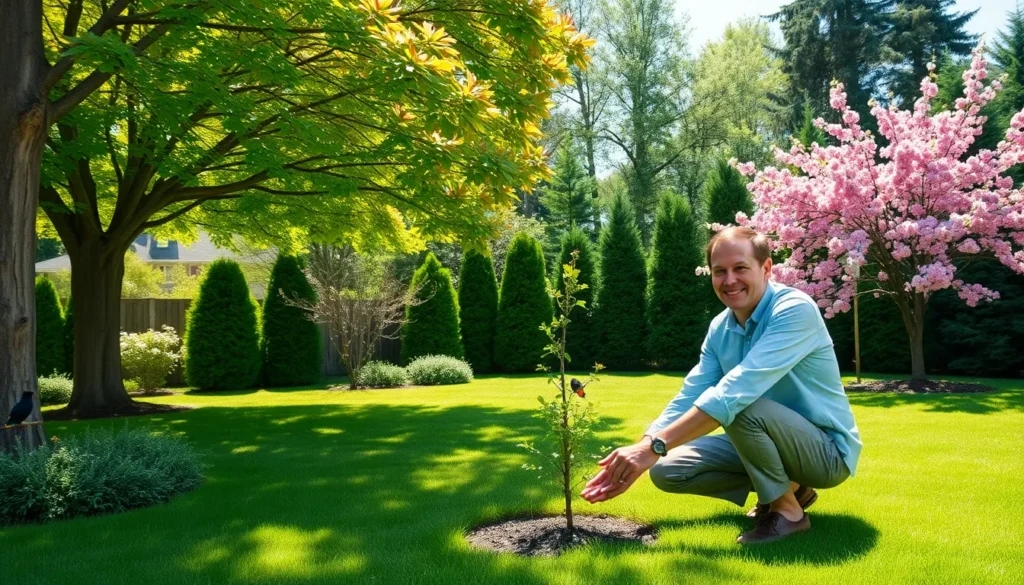Table of Contents
ToggleWhen it comes to landscaping, trees are the ultimate multitaskers. They provide shade for those lazy summer afternoons, a home for chirping birds, and even a backdrop for that Instagram-worthy barbecue. Who wouldn’t want a majestic oak or a vibrant maple gracing their yard? Not only do trees enhance curb appeal, but they also boost property value faster than you can say “leafy wonderland.”
Types of Trees for Landscaping
Various tree types play specific roles in landscaping. Understanding these categories aids in selecting the best options for outdoor spaces.
Deciduous Trees
Deciduous trees shed leaves annually, offering seasonal interest. Maple, oak, and birch trees provide magnificent fall colors, enhancing visual appeal. These trees typically grow faster and offer ample shade, making them ideal for warmer climates. Moreover, they create habitats for diverse wildlife. Planting deciduous trees near residential areas can improve property values and create inviting outdoor environments.
Evergreen Trees
Evergreen trees maintain foliage throughout the year, providing consistent greenery across seasons. Species such as pine, spruce, and fir offer screen and windbreak benefits, resulting in added privacy and protection. Their year-round presence adds structure to landscapes, while some also produce cones that attract wildlife. Landscaping with evergreens often requires less maintenance due to their resilience in varying conditions.
Flowering Trees
Flowering trees bring vibrant colors and fragrances to landscapes, enhancing aesthetic charm. Cherry, dogwood, and magnolia trees exhibit stunning blossoms in spring, capturing attention. Attracting pollinators like bees and butterflies, flowering trees support local ecosystems. Placing them near patios or entryways can create beautiful focal points that elevate overall outdoor enjoyment. Additionally, their beauty contributes to an inviting atmosphere.
Benefits of Using Trees for Landscaping
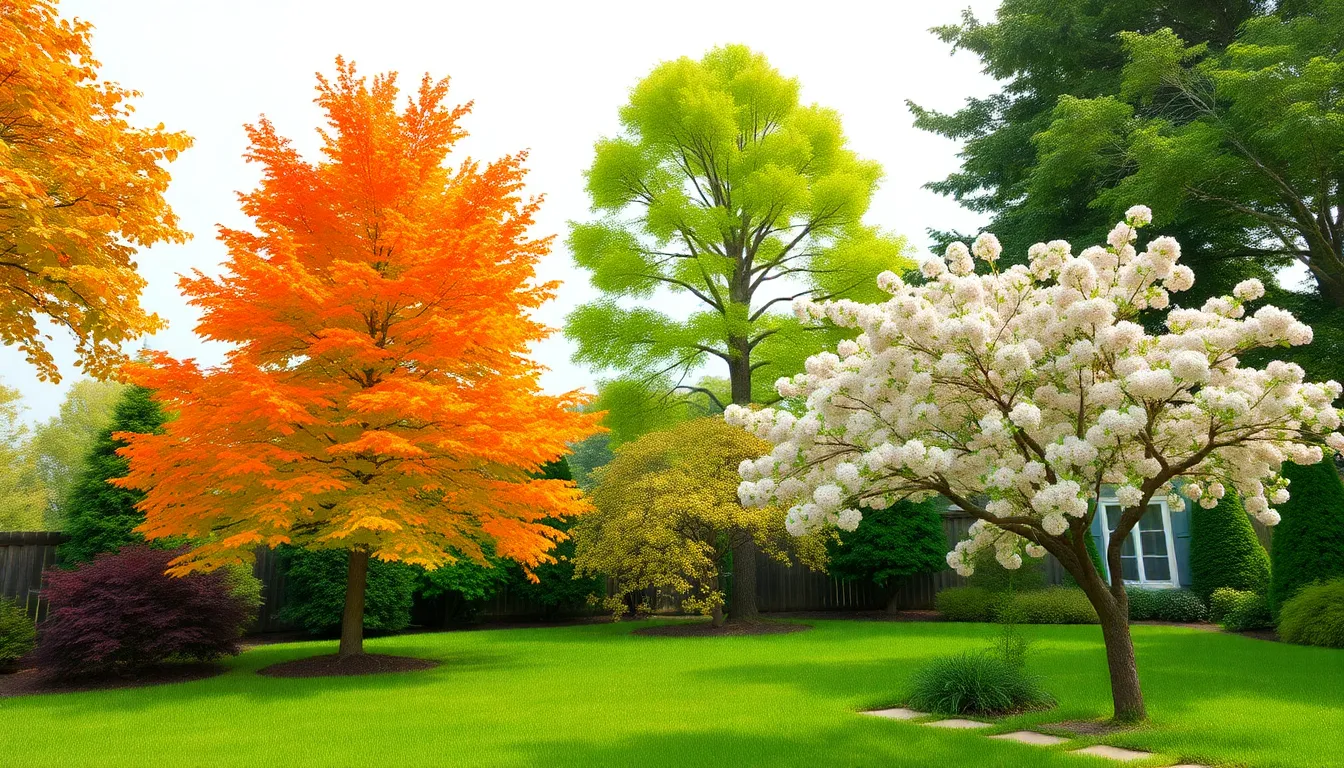
Incorporating trees into landscaping offers numerous advantages, impacting both the environment and the visual appeal of outdoor spaces.
Environmental Impact
Trees significantly improve air quality by absorbing carbon dioxide and releasing oxygen. They filter pollutants and provide a habitat for various wildlife species. Increased shade from trees can lower surrounding temperatures, leading to reduced energy costs for cooling buildings. Furthermore, trees help manage stormwater runoff, preventing soil erosion and promoting groundwater recharge. Their root systems stabilize the soil, enhancing local ecology. Choices like planting native species often support biodiversity and adapt well to local climate conditions, fostering a more resilient landscape.
Aesthetic Appeal
Landscaping with trees enhances the beauty of any property. Different tree types add texture, color, and seasonal interest, transforming an ordinary yard into a picturesque retreat. Deciduous trees create vibrant autumn foliage, while flowering varieties introduce stunning blossoms during spring. Evergreens provide a constant backdrop, maintaining visual interest throughout the year. Strategic placement of trees can also frame views, define spaces, and create privacy. Their ability to soften hardscapes brings harmony to outdoor designs, making them more inviting for relaxation and enjoyment.
Factors to Consider When Choosing Trees
Selecting the right trees involves several important factors. Understanding local climate and soil conditions heavily influences successful landscaping choices.
Climate and Soil Conditions
Climate significantly affects tree health and growth. Regions with warm summers may benefit from heat-tolerant species, while colder areas require frost-resistant varieties. Soil quality also plays a critical role in tree establishment. Well-draining, nutrient-rich soils support healthy root systems, whereas compacted or poor soils can hinder growth. Native tree species often adapt better to local conditions, ensuring resilience and longevity.
Growth Rate and Maintenance Needs
Growth rate varies among tree species, impacting the time required for desired coverage or shade. Fast-growing trees, like willow or red maple, quickly provide benefits but may require regular pruning. Slow-growing varieties, such as oak or dogwood, take longer to reach maturity, offering stability and durability. Maintenance needs also differ; some trees demand more care, including watering, fertilizing, and pest management. Choosing low-maintenance species, such as sweetgum or hard maple, increases long-term satisfaction and reduces overall upkeep.
Tips for Planting and Caring for Trees
Planting and caring for trees requires careful attention to detail. Proper techniques ensure strong growth and longevity.
Proper Planting Techniques
Select the right location before planting trees. Consider sunlight, space, and soil type. Dig a hole twice as wide as the root ball and the same depth. This allows roots to spread easily. Position the tree in the center of the hole, ensuring the root collar sits at soil level. Backfill the hole gently, using native soil mixed with compost for added nutrients. Water the tree thoroughly after planting to eliminate air pockets. Mulching around the base helps retain moisture and prevent weeds.
Regular Maintenance Practices
Regular maintenance is crucial for tree health. Watering is essential, especially during the first few seasons. Establish a deep watering routine, providing about 10 gallons of water each week. Fertilize trees annually with a balanced fertilizer to support growth. Pruning promotes air circulation and shapes the tree. Remove any dead or diseased branches promptly to prevent spread. Monitor pests and diseases regularly. Taking these steps ensures trees thrive, enrich the landscape, and enhance property value.
Incorporating trees into landscaping not only elevates the aesthetic appeal of outdoor spaces but also provides numerous environmental benefits. By selecting the right species based on local climate and soil conditions, homeowners can create vibrant and sustainable landscapes. The strategic placement of trees enhances property value and fosters inviting environments for relaxation.
With proper care and maintenance, trees can thrive for many years, offering shade, beauty, and habitat for wildlife. Investing in trees is a long-term commitment that pays off in both enjoyment and ecological health. Whether choosing deciduous, evergreen, or flowering varieties, the right trees will transform any yard into a picturesque retreat.



